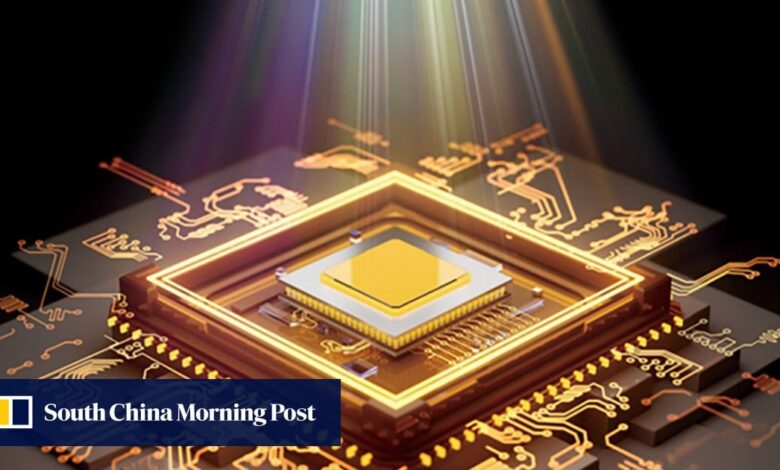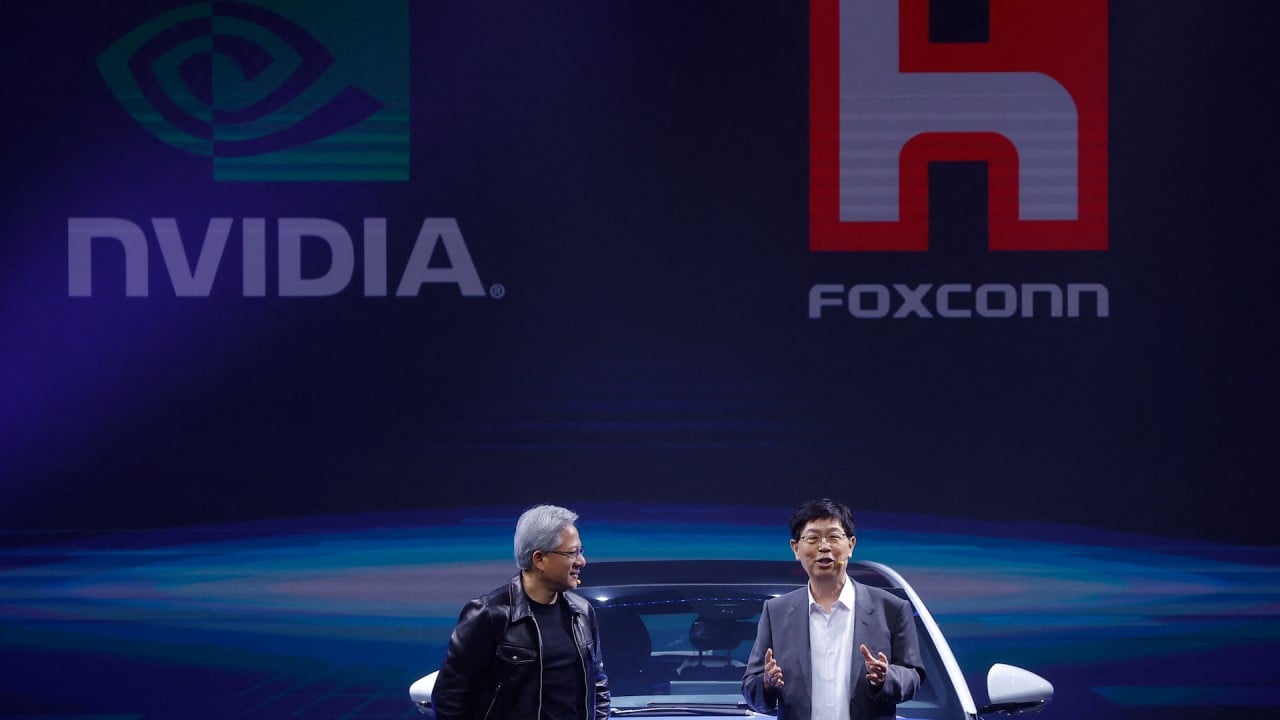Chinese scientists create chip than can perform AI task 3,000 times faster than Nvidia’s A100: study

[ad_1]
Chinese scientists have produced a chip that is significantly faster and more energy efficient than current high-performance AI chips when it comes to performing some tasks such as image recognition and autonomous driving, according to a new study.
The new chip – known as the All-Analogue Chip Combining Electronics and Light (ACCEL) – is light-based and uses photons, a type of elementary particle, for computing and transmitting information to achieve a faster computing speed.
The idea of a light-based chip is not new, but the chips currently in use rely on electric current for calculation because photons are more challenging to control.
Chinese tech firms scramble to secure Nvidia’s AI chips before US ban cuts off supply
Chinese tech firms scramble to secure Nvidia’s AI chips before US ban cuts off supply
The A100 is subject to US sanctions on China and it, along with other advanced AI chips, are produced with advanced lithography machines to which China does not have access.
The new chip was instead built by China’s Semiconductor Manufacturing International Corporation using a cheap 20-year-old transistor fabrication process
“The performance [of the chip] could be further optimised through improvements in the building process or by adopting more expensive fabrication processes under 100 nanometres,” the research team from Tsinghua University’s automation and electronic engineering departments wrote in the paper published last week.
Unlike semiconductor chips, photonic chips use the intrinsic physical properties of light by replacing transistors with ultramicroscopes and electrical signals with light signals.
“Deployment of photonic computing systems used to be a challenge due to complicated structural design and vulnerability to noise and system errors. The team innovatively introduced a computing framework that fuses photonic and analogue electronic computing,” Tsinghua’s website said in an article on Tuesday.
Tsinghua also said that using light signals greatly increased energy efficiency and “the energy required to operate existing chips for an hour could power ACCEL for over 500 years”.
Its low power consumption may also help overcome the problem of heat dissipation, which currently places a significant barrier in the way of further miniaturising integrated circuits.
However, the chip’s analogue computing architecture limits its application to solving specific problems and it cannot run various programs or compress files like general computing chips in smartphones.
The tasks it can perform include high-resolution image recognition, low-light computation and identifying traffic, according to Tsinghua’s website.
It also has certain advantages when it comes to AI vision tasks because passive light from the environment carries information itself allowing it to compute directly during the sensing process.
The project was funded by the Chinese science ministry’s National Key Research and Development Programme and the National Natural Science Foundation of China.
ASML employee accused of data theft went to Huawei: report
ASML employee accused of data theft went to Huawei: report
MakeSens, a Beijing-based chip design company co-founded by one of the researchers involved in the project, was also involved in the development of the chip. The company launched a low-powered chip using analogue computing this May.
According to Tsinghua, Dai Qionghai, one of the co-leaders of the research team: “Developing a new computing architecture for the AI era is a pinnacle achievement. However, the more important challenge is to bring this new architecture to practical applications, solving major national and public needs, which is our responsibility.”
The research team has yet to respond to questions about the chip’s commercial prospects.
[ad_2]
Source link






